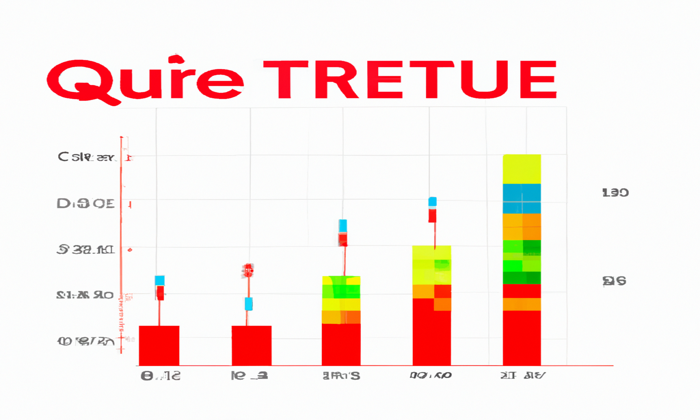In the rapidly evolving world of finance, tokenized certificates of deposit are emerging as a groundbreaking innovation reshaping traditional investment landscapes. By leveraging blockchain technology, financial institutions can transform conventional certificates of deposit into dynamic digital assets that offer enhanced liquidity, transparency, and efficiency. This evolution aligns with the growing digital asset ecosystem, where tokenized deposits pave the way for a more capital-efficient financial framework. As industry leaders adopt such innovations, stakeholders can optimize stablecoin management and reap the benefits of immediately accessible digital assets. With a firm regulatory direction supporting this shift, tokenized certificates of deposit are on track to revolutionize the interactions within the financial sector, creating new opportunities for institutional and retail investors alike.
Tokenized deposits, often referred to as digital representations of conventional financial instruments like savings accounts or certificates of deposit, signify a notable advancement in asset management. These digital assets are crafted through a process that integrates blockchain technology, enhancing the accessibility and tradability of traditional deposits. As financial institutions explore new avenues, the introduction of tokenized certificates is set to redefine fund management and promote secure transactions within the emerging digital realm. This innovative approach not only increases the efficiency of stablecoin management but also fosters new interactions between financial entities and investors, creating a harmonious blend of tradition and technology in the banking sector.
Understanding Tokenized Certificates of Deposit
Tokenized certificates of deposit (CDs) represent a transformative step in the realm of digital banking, where traditional financial instruments are converted into their digital counterparts on the blockchain. This innovation allows each tokenized CD to be backed by tangible retail or institutional deposits, enhancing security and trust among investors. By leveraging blockchain technology, these instruments provide a unique opportunity for individuals to interact with their deposits in a more flexible and efficient manner, facilitating quicker transactions and comprehensive transparency.
Moreover, the shift towards tokenized certificates of deposit presents a significant evolution for financial institutions. As banks increasingly embrace the digital asset ecosystem, they are unlocking new avenues for liquidity and capital efficiency. In the past, managing a conventional CD often came with complexities, including penalties for early withdrawal. However, tokenization allows for fractional ownership and trading capabilities that enhance liquidity while maintaining regulatory compliance, enabling investors to maneuver their assets freely and securely.
The Role of Blockchain Technology in Financial Institutions
Blockchain technology stands at the forefront of transforming financial institutions as they navigate the complexities of modern digital assets. By implementing decentralized ledgers, banks can ensure enhanced security, lower operational expenses, and improved service offerings to their clientele. This evolution is evident as major banks such as J.P. Morgan and Citibank have already established digital asset service departments to capitalize on the efficiencies brought by blockchain integration.
Furthermore, as financial institutions adopt blockchain for tokenized deposits, they gain a competitive edge in the digital economy. The reduction of fraud and manipulation risks, coupled with the automation of processes through smart contracts, marks a new era of trust and operational excellence. Institutions are now able to focus on stablecoin management and other advanced asset services, promoting a seamless integration of services that customers demand in today’s fast-evolving market.
Exploring the Digital Asset Ecosystem
The digital asset ecosystem offers a fertile ground for innovation, marked by rapid advancements in tokenization, particularly involving institutional frameworks and products. As blockchain technology continues to gain traction, financial institutions are diversifying their portfolios to include digital assets, reshaping the landscape of investment and savings. Tokenized deposits are at the forefront of this movement, bridging traditional finance with modern requirements.
With a well-structured digital asset ecosystem, entities can explore various opportunities for stablecoin management, thereby enhancing liquidity and accessibility for users. This infrastructure allows for better interoperability among different digital currencies and institutions, facilitating a more dynamic environment for investment and transaction management. As financial regulations evolve, the ecosystem’s strength will depend on institutions’ ability to adapt and innovate, ensuring secure and compliant operations.
Benefits of Tokenized Deposits for Investors
Investors are increasingly turning to tokenized deposits as they unveil a plethora of benefits compared to traditional financial instruments. One significant advantage is the ability to facilitate faster and more efficient transactions, courtesy of blockchain technology. This means that instead of waiting for days for transactions to settle, tokenized assets can be transferred almost instantaneously, freeing up capital and offering a higher degree of liquidity.
Additionally, tokenized deposits can democratize access to investment vehicles, allowing fractional ownership of traditional certificates of deposit. This capability is particularly revolutionary, as it enables individuals with lower capital to participate in investment opportunities that were previously reserved for those with substantial funds. This brings equity to the investment landscape, encouraging a broader range of participants to join the evolving financial markets.
The Future of Stablecoin Management
Stablecoin management is poised to lead the charge in the evolving world of digital assets, particularly as regulatory frameworks become more robust. As financial institutions implement systems for managing tokenized deposits alongside stablecoins, the result is a more integrated approach to liquidity management and operational efficiency. These systems not only streamline processes but also ensure compliance with financial regulations, providing a secure environment for all participants.
By adopting advanced approaches in stablecoin management, financial institutions position themselves strategically to respond to the increasing market demands for digital asset services. The seamless integration of tokenized assets into existing banking infrastructures via platforms like UDPN’s solutions allows for enhanced interoperability, enabling institutions to navigate the complexities of modern finance more effectively.
The Impact of Regulations on Tokenized Financial Assets
As the landscape of digital assets continues to evolve, regulatory frameworks play a pivotal role in shaping the future of tokenized financial assets. Institutions are required to navigate a maze of compliance measures to operate securely within legal boundaries, ensuring that tokenized deposits and other digital assets meet the established standards. The growing scrutiny around stablecoins further emphasizes the importance of regulatory adherence in maintaining consumer confidence.
Moreover, as regulations become clearer, financial institutions that embrace tokenization will gain a definitive competitive advantage. By prioritizing compliance and proactively adapting to regulatory changes, institutions can not only better protect their clients and assets but also foster an environment of innovation that will drive the digital asset ecosystem forward.
Innovations in Financial Technologies and Tokenization
The financial sector is witnessing unprecedented innovations fueled by technologies such as blockchain, artificial intelligence, and machine learning. These advancements have led to the tokenization of traditional financial instruments, enabling an entirely new paradigm of asset management and investment. As financial institutions invest in these technologies, the efficiency, transparency, and security of operations dramatically improve, fostering an environment ripe for growth in tokenized deposits.
Tokenization reduces frictions in the financial system by automating processes and enhancing transaction speeds, thus significantly lowering costs. As more institutions recognize the potential of tokenized assets, we can expect to see a shift towards more creative and adaptive financial solutions that cater to the evolving needs of consumers and businesses alike.
Sector Collaboration: Bridging Traditional and Digital Finance
Collaboration between traditional financial institutions and emerging digital platforms is essential for creating a cohesive financial landscape. By working together, these sectors can leverage each other’s strengths to improve service delivery, enhance security, and introduce new product offerings such as tokenized deposits. Collaborative efforts can also help address regulatory concerns, ensuring that innovations are compliant with laws while promoting a vibrant digital asset ecosystem.
This synergy allows for the development of robust solutions that bridge the gap between conventional finance and the burgeoning world of digital assets. As institutions collaborate to roll out solutions like the tokenized deposit/stablecoin management system, they pave the way for a more integrated financial future, where speed, compliance, and customer satisfaction are prioritized.
Evaluating the Long-Term Viability of Tokenized Banking
The long-term viability of tokenized banking hinges on its ability to address the evolving needs of consumers amidst rising technological advancements. As users become more accustomed to the digital landscape, their expectations for services evolve, demanding more responsiveness, efficiency, and transparency. Therefore, financial institutions must continuously adapt their offerings to ensure that tokenized deposits and services remain appealing and relevant in the market.
Moreover, as the world increasingly embraces digital currencies and assets, tokenized banking is expected to flourish. Financial institutions must prioritize security, compliance, and user experience to foster trust and encourage adoption among consumers. The success of tokenized banking will ultimately depend on maintaining robust frameworks that allow for safe, efficient, and flexible financial transactions.
Frequently Asked Questions
What are tokenized certificates of deposit and how do they work within the digital asset ecosystem?
Tokenized certificates of deposit are digital representations of traditional certificates of deposit (CDs) that have been converted into tokens on a blockchain network. Each token is backed by a retail or institutional deposit, facilitating faster transactions and providing benefits such as increased liquidity and improved transparency. Through this process, investors can trade their tokenized CDs in real-time on digital asset exchanges, empowering them to engage actively within the digital asset ecosystem.
How do financial institutions benefit from adopting tokenized certificates of deposit?
Financial institutions can significantly reduce operating costs, improve transactional transparency, and offer innovative services by adopting tokenized certificates of deposit. By implementing blockchain technology, banks can enhance capital efficiency, streamline operations, and respond to the increasing demand for digital asset services, ultimately positioning themselves as leaders in the digital financial landscape.
What role does blockchain technology play in the management of tokenized deposits?
Blockchain technology is central to the management of tokenized deposits as it provides a secure, decentralized ledger for recording and facilitating transactions. This not only ensures the integrity of the financial data but also automates key processes via smart contracts, such as interest rate calculations, and enhances scalability in the digital asset ecosystem.
How do tokenized deposits compare to traditional certificates of deposit in terms of liquidity?
Tokenized deposits offer greater liquidity than traditional certificates of deposit. While conventional CDs often impose early withdrawal penalties and have fixed terms, tokenized versions can be traded freely on digital asset platforms. This innovation allows investors to access their funds more flexibly and efficiently, significantly lowering barriers to liquidity.
What advancements have major financial institutions made in the area of tokenized deposits and digital assets?
Major financial institutions such as J.P. Morgan and Citibank have established dedicated departments for digital asset services, leading the way in the tokenization trend. Through partnerships and technological innovations, these banks are developing tokenized deposit management systems that integrate blockchain technology, improving operational efficiency and accelerating the adoption of digital assets.
What challenges do tokenized certificates of deposit face in regulatory environments?
Tokenized certificates of deposit face challenges primarily related to regulatory scrutiny in the evolving landscape of digital assets. As financial authorities establish guidelines for blockchain technology and stablecoin management, compliance with these regulations remains critical. Platforms designed for managing tokenized deposits must ensure they operate within these frameworks to maintain stability and investor trust.
How does the repeal of SAB 121 impact the adoption of tokenized certificates of deposit?
The repeal of SAB 121 has amplified banks’ appetite for holding tokenized assets by reducing the regulatory burden associated with their balance sheets. This change encourages more financial institutions to venture into tokenized certificates of deposit, as they can now leverage blockchain technology without the previously imposed limitations, enhancing their capacity for capital-efficient transfers.
| Key Point | Details |
|---|---|
| United States Leadership | The U.S. is a global leader in supporting and integrating digital assets, according to a recent study by Atmos. |
| Banking Institutions Involved | Major banks like J.P. Morgan, Citibank, and UBS are developing digital asset services, enhancing the trend of tokenization in finance. |
| Benefits of Tokenized Deposits | Tokenized deposits facilitate capital-efficient transfers, lower operational costs, and enable faster transactions via blockchain technology. |
| Definition of Tokenized Deposits | Tokenized deposits are digital tokens representing traditional deposits that can be traded, increasing liquidity and transparency. |
| Universal Digital Payments Network (UDPN) | UDPN has launched systems for managing tokenized deposits and stablecoins, ensuring compliance and interoperability with traditional banking. |
| Future Outlook | With increasing regulatory interest, systems like those provided by UDPN are crucial for ongoing innovation in the financial sector. |
Summary
Tokenized certificates of deposit are redefining the landscape of financial investments, aligning with the technological advances and regulatory support of the U.S. financial sector. These digital tokens enable greater liquidity, efficiency, and transparency, transforming traditional banking practices and making investment in deposit instruments more accessible. As the sector continues to evolve, institutions that harness tokenization effectively are poised to lead the way in innovative finance.
Tokenized certificates of deposit represent a revolutionary shift in how traditional banking assets are managed and traded within the digital asset ecosystem. These innovative financial instruments leverage blockchain technology to transform conventional certificates of deposit into secure, tradeable digital tokens, increasing both efficiency and liquidity for investors. By utilizing tokenized deposits, financial institutions can enhance transparency and streamline operations, while also offering investors the advantage of fractional ownership and instantaneous transactions. As digital payments continue to gain traction, tokenized certificates of deposit are poised to play a crucial role in the intersection of traditional finance and cutting-edge technologies. This shift not only benefits banks by lowering operating costs but also creates new investment opportunities in the rapidly evolving landscape of stablecoin management and digital finance.
Revolutionizing the traditional banking landscape, digital tokenized deposits, commonly referred to as tokenized certificates of deposit, offer an innovative approach to asset management and investment. This new form of financial representation allows institutions and clientele alike to embrace the advantages of blockchain, significantly enhancing operational efficiency and ensuring increased liquidity compared to their conventional counterparts. By converting typical time deposits into dynamic digital assets, investors can enjoy the flexibility of trading these electronically secured tokens on various platforms. This evolution towards tokenization reflects the ongoing transformation within the financial sector, where the intersection of regulated monetary systems and digital assets paves the way for a more integrated future in finance. With the rise of such digital assets, financial institutions can better cater to modern demands while upholding stability and compliance within their operations.














